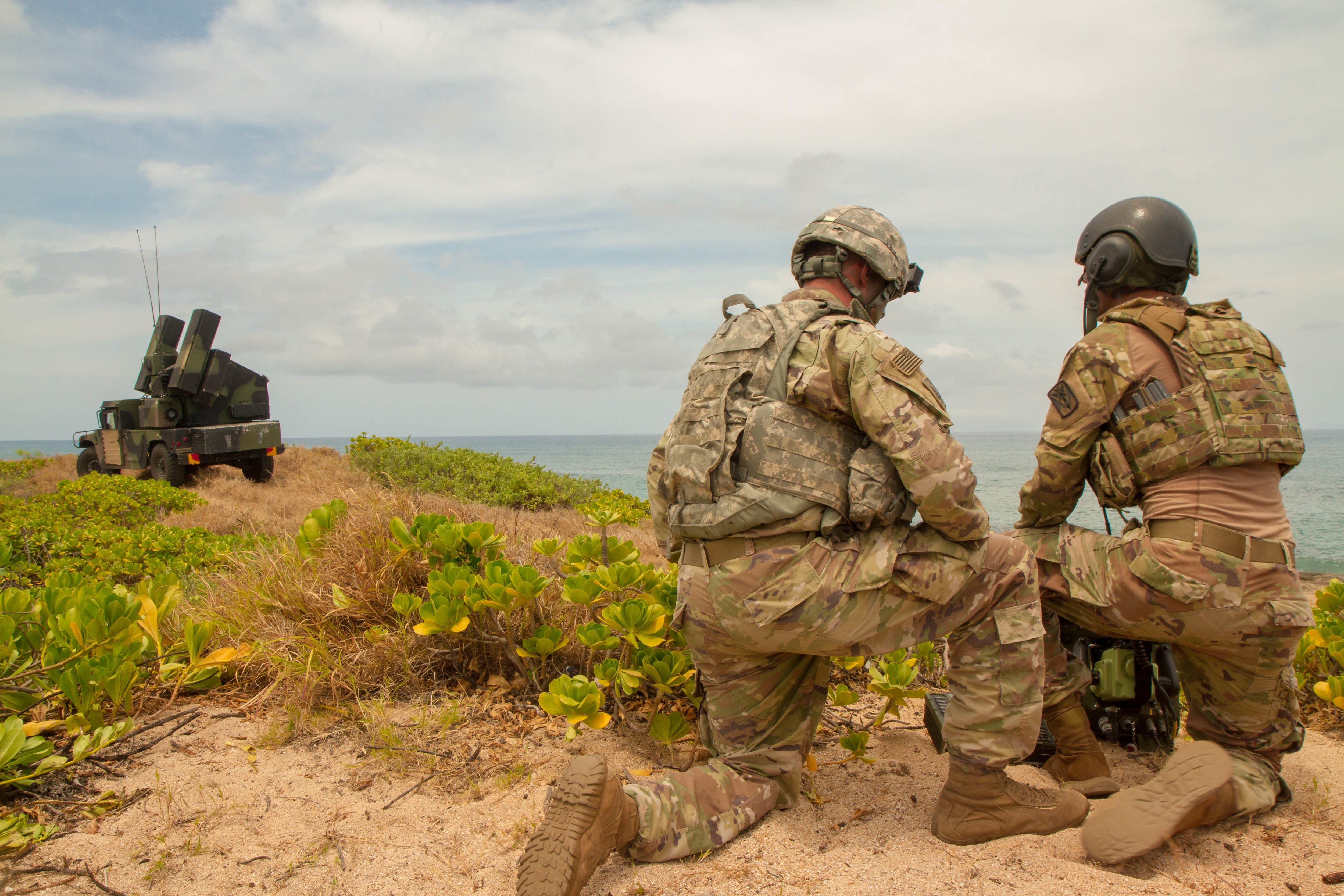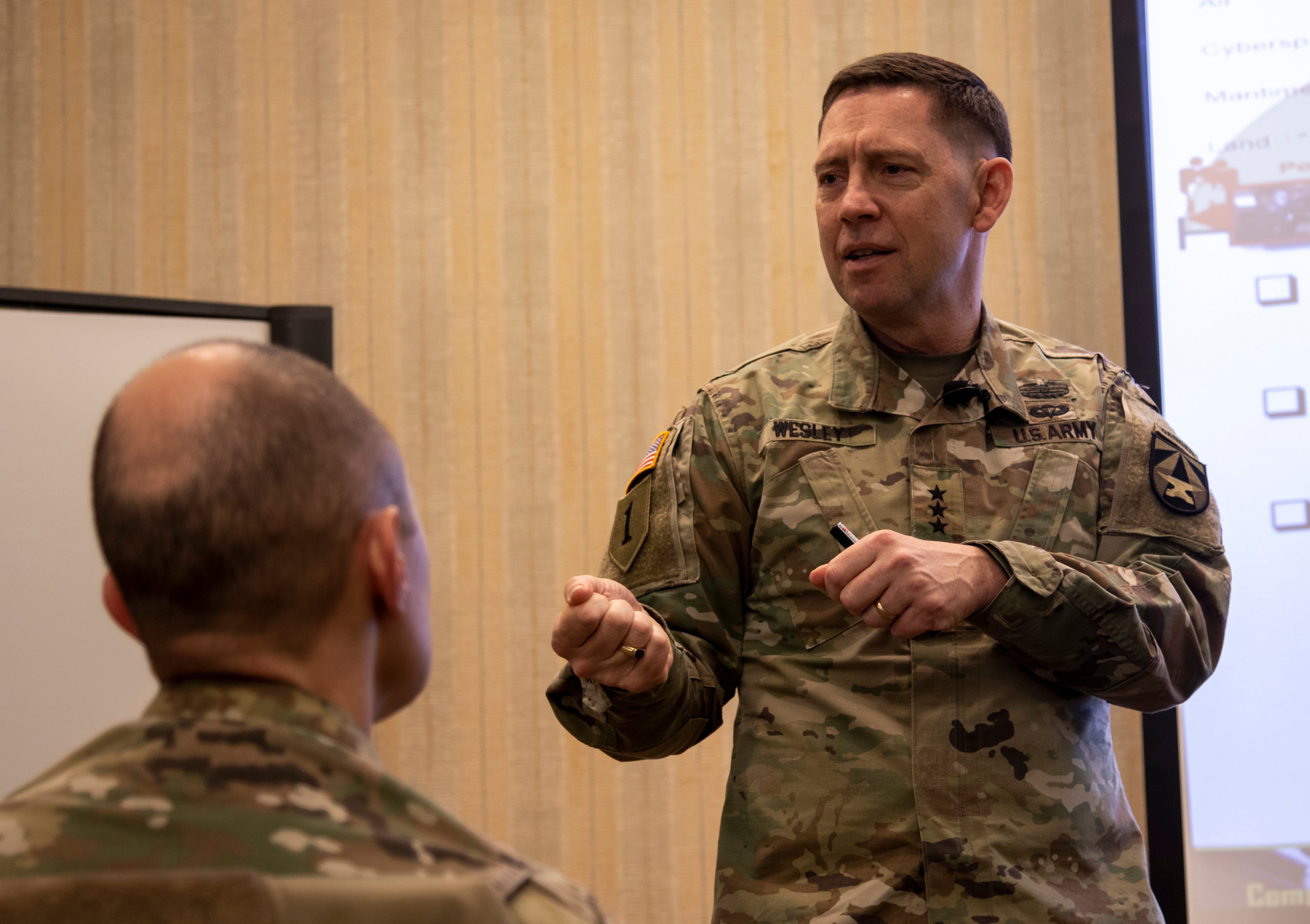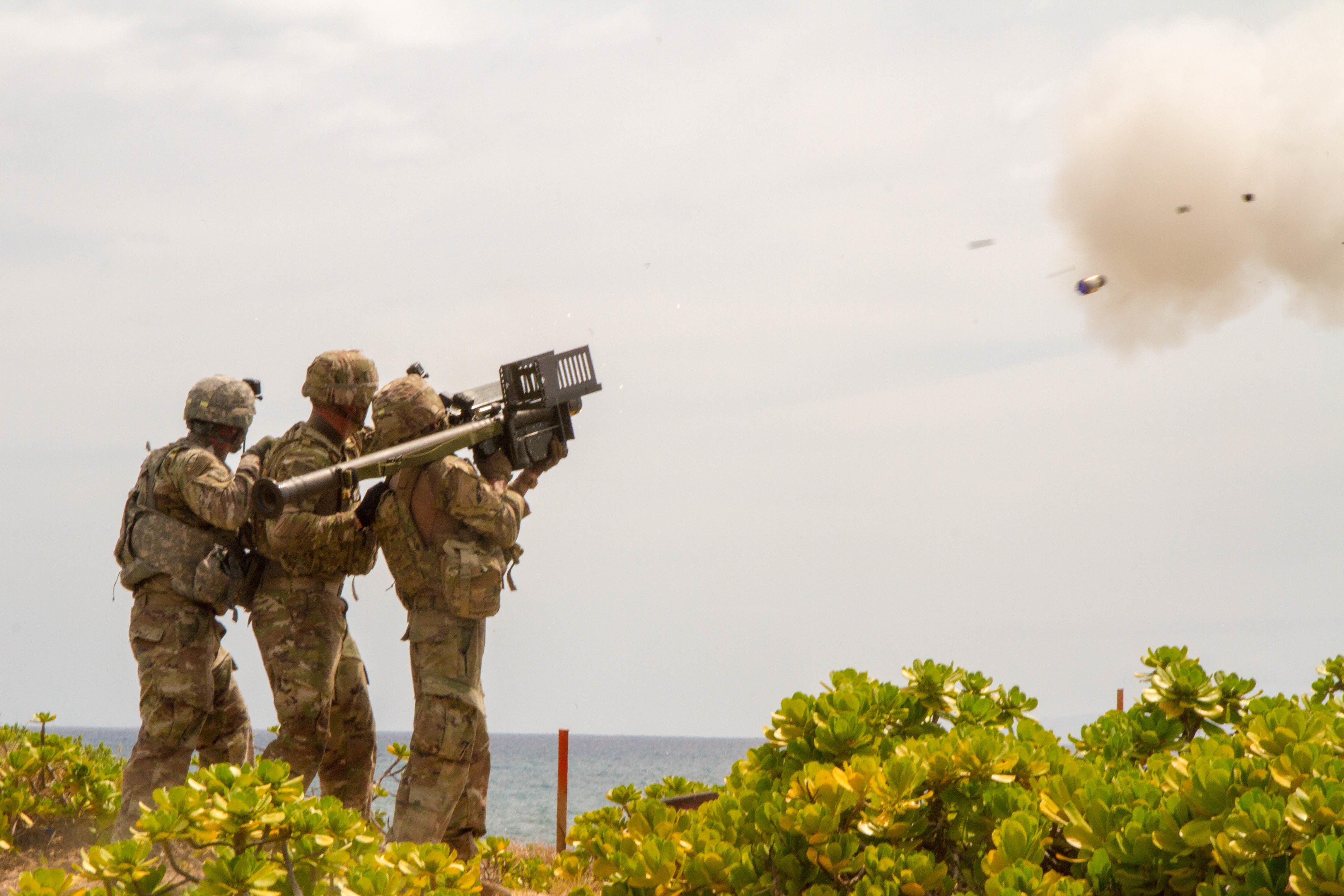Lt. Gen. Eric Wesley of Army Futures Command recently sat down with defense media to talk about how the Army’s multi-domain operation concept is being tested in pilot task forces, into training and eventually across the force.
Multi-domain operations are the most recent version of what began as multi-domain battle at least three years ago. It is how the Army envisions a joint warfighting concept that will bring to bear all of the firepower, both kinetic and non-kinetic, to help the U.S. military regain superiority in what is increasingly becoming a contested, access-denied world of near-peer competitors such as China and Russia.
Wesley is the deputy commanding general of the futures concepts and center at Army Futures Command. In his role he is helping AFC shepherd the development of the concepts and how they are applied to big-picture war plans, training, formations, new equipment and the individual soldier.
This question-and-answer format has been edited for clarity.
Q: The Army rolled out MDO in its early form a few years ago as multi-domain battle, always with the note that it would become a joint doctrine. Can you explain how this is both a joint and Army-driven concept?
A: You can’t effectively prosecute a campaign using MDO if it’s not joint. Different domains can be applied to create the window of opportunity. Contrary to the sequencing we may have been used to with Air Land Battle. What we’re comfortable with and what we’re used to in campaigns of the past is the Air Force might go in initially to prep an objective followed by a significant campaign of ground maneuver.
The opposite may be true in the future and not only in Europe, but also in this case, in Asia. Imagine the Army effectively securing airspace and waterways by long-range precision fires or air missile defense. It’s turning everything on its head. And when I say that I’m not saying it will always be the Army. I’m saying at different times a certain domain or multiple domains can be leveraged in order to create space for another service or another capability. And I think that validates the joint nature of all of this.
RELATED

Q: What does the work of a battalion- or even company-sized element look like in 2028, when much of this concept should be implemented? And who’s job looks the most different from today?
A: I think it’s fair to say in the future MDO is at the tactical level. I’m talking about at the company, battalion level maneuver is still about shoot, move, communicate. It’s still about combined arms at the very lowest tactical level. What MDO gives you is the opportunity to maneuver in the way we have trained for decades.
Now, what will be distinct is we will rely on the tactical level to think, assess and employ all domains when necessary. So, the thinking has to be able to be such that tactical-level commanders can see opportunities for all domains to be integrated or leverage the benefits of other domains in their tactical space. But in the end a battalion will maneuver like a battalion. It’s more dispersed and leaders are calling on support from a much wider area.
I think it’s fair to say that the most significant distinction will come at the operational and strategic level. There are a couple of reasons I say that. Great powers in the current and future era will be much more significant that they were in the past. We will expect that operational and theater level commanders will have to be in a space where they’re competing daily in order to enable any kind of penetration or in order to enable conflict. If you’re not competing you can’t adequately engage in conflict.
Q: There’s an Indo-Pacific Command based multi-domain task force with two more on the way, one for that same region, the other for Europe. As these task forces conduct their experiments and exercises how does that get to the rest of the Army?
A: It’s constant cycle. So, any time we have a capstone exercise for example, Talisman Saber, we have representatives from our concepts, analysts from the research and analysis center out at Fort Leavenworth participate in those and bring those lessons back. The U.S. Army in Multi-Domain Operations 2028 Document was employing things learning from MDTF last year. Army modernization strategy and annual modernization guidance become so critical.
This describes the Army we want to build. But as we adjust every year we are publishing a new annual modernization guidance. And that is where you can make changes. Based on this concept we drew out an unconstrained design of the Army of the future starting in 2028 up through 2035. We know all the organizations we want and at what echelons. But what’s inside of those and the degree to which I need to give an organization, that’s easily adjusted in the ensuing years as we continue to turn on all of our experimentation efforts.

Q: Does that account for political changes, shifting priorities in the White House, Congress and Pentagon?
A: That’s why you have this total Army analysis every year. And we’ve got this design, which is our azimuth. Then during the total Army analysis we decide, okay, what can we afford, and of what we can afford what are the priority formations we want to go after?
Q: How does the operational force adopt MDO?
A: I think what you’re going to see is after we get these MDTFs out into theater and then geographic combatant commanders recognize the virtues that they bring to their capacity and as we learn and as we go through total Army analysis what you’ll see is that we’ll start building out those echelons we’ve talked about. You’ll need to have a theater fires command, you’ll need to have an operational fires command. You’ll need to have cyber capacity at echelon. You’ll need to have access to space assets at echelon.
So those organizations, what they are learning, to a degree, validates our design. To the degree resources present themselves validates the concept. We’re already doing that. Theater fires command is one we’re prioritizing. Getting capacity back into the theater that is accessible is all part of the sequencing of decisions we have.
Q: Can you expand on the theater fires command concept?
A: The Air Force and Army are well aligned in that this future design is going to have to be increasingly joint. Headquarters are going to be increasingly purple in the future, we’re talking 10 years out. Any sensor, any shooter, through any command and control node in near-real time, with sufficient authorities. So, what does that mean?
It’s something we envision, not something we program for. If you can source your sensor data into combat cloud capacity that can be accessed by any shooter, you’re consolidating your sensors. And the right shooter through the right C2 node can be sorted or synthesized through artificial intelligence, as an example. So now you can imagine that’s a very purple process and a more information age approach.
Q: Is there a single process by which a commander can call up shooters from land-based missiles, ships, submarines, aircraft?
A: That’s how we can use AI to help decide what’s the most effective weapons system, effective tool given the priorities of targets that might have been previously identified. The benefits of this is it gives you the opportunity if targets present themselves to better quickly respond with a different tool. Imagine a scout on the reverse side of a tactical slope. That soldier knows they need to go across that terrain feature to somewhere else. They have certain organic assets to be able to determine what’s on the other side of that slope.
But if you imagine an F-35 may have just flown over that slope, that space in the previous 60 minutes. Those aircraft are going to be taking in all sorts of data. How is the scout going to get access to that data without waiting for a direct point-to-point communication with that aircraft? If that data can reside in a place that you can get common access to you can imagine there are sensors that are ubiquitous. They’re all over the battlefield. So if you synthesize that, you can imagine that you can get a rich set of data that all can access in one manner or another. You won’t necessarily have access to that all the time. Bandwidth may be limited.
And as a distributed organization we may have to operate off the net for a period of time, maybe go dark. Not unlike the way submarines operate now. They go off the net for a period of time. When you come back up you may have to do a download adjust your algorithms, adjust your data. You’re going to have to balance both cloud computing and computing at the edge.
Q: What about partners? Is their role to duplicate what we have or to bring their own capabilities to add on to what the U.S. military has in the region?
A: You want to create porcupines against your adversaries. Empowering an ally creates another porcupine. The Pacific Pathways program is another way to do that. I think what you’ll see in the coming years is a more deliberate approach to ensure we have the right Pacific partner with the right capability in order to next with a larger campaign capability. Ultimately, I think you’ll see a network of relationships that have purpose.
Q: Where do Army Futures Command and the Cross Functional Teams fit into the MDO work?
A: It takes this description of how you’re going to fight and make it a reality across the enterprise. AFC’s responsibility is to choreograph across the enterprise what changes need to be made over time in order to make that a reality by 2028. That’s why you have to have a modernization strategy coordinated with the concept. After you write strategy then you have to have annual modernization guidance to adjust as you go.
AFC choreographs over a 10-year period and holds enterprise stakeholders accountable. It’s no surprise we selected the CFT priorities we did, because they’re all necessary to drive the MDO concept. We’re postured better than we have been in at least 30 years to modernize the Army. Because all of those have lined up. A pacing threat, national security strategy and national defense strategy. We’ve done acute things in the past but that whole string, thread of continuity is aligned.
Todd South has written about crime, courts, government and the military for multiple publications since 2004 and was named a 2014 Pulitzer finalist for a co-written project on witness intimidation. Todd is a Marine veteran of the Iraq War.





